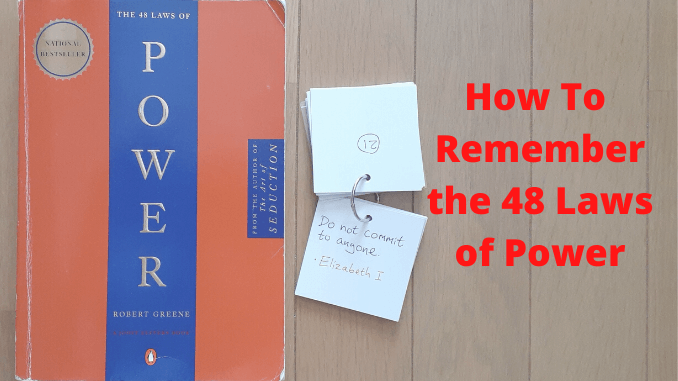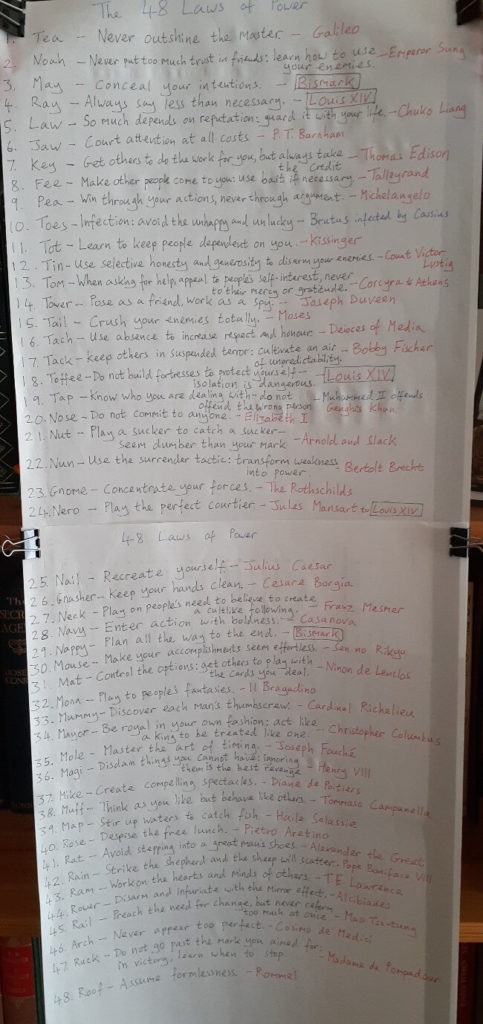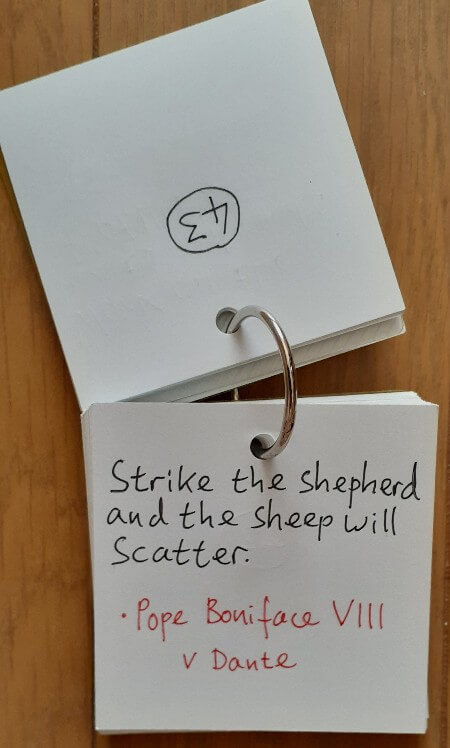
The 48 Laws of Power by Robert Greene is a modern American bestseller. It has sold over 1.2 million copies in the USA alone and has been translated into 24 languages according to Wikipedia – yes, the book even has its own Wikipedia page.
But how many of those 48 “laws” do readers actually remember. How about law number 19? Or law number 34? No idea? That’s not surprising really. The book is packed with information and supplementary illustrative stories pack the margins of the book too, so there is a lot to digest.
Greene is an excellent storyteller, but even so, its more than likely that most readers only remember a few of the laws and exemplae. Or perhaps it’s just me. Whenever I tried to recall the details about the book I found that I only had a very sketchy memory of the laws and the characters who exemplify them.
The Major System to the Rescue!
So I decided to work with the good old mnemonic memory system called the Major system to try and commit the laws to memory. After all, unlike my chess opening memory project there are only 48 laws to remember. I decided to select just one examplar for each law, so that’s just 48 laws and 48 people to remember.
If you are not familiar with the Major system, here’s a brief overview. Each of the ten digits, one to nine, and zero, is allocated a consonant (or range of related consonants) and is allocated a one-syllable word that begins with that consonant.
For example, the consonant that is allocated to number one is “t” and the one syllable word = “tea”. Now that each of the numerical digits has an associated consonant sound, you can combine digits to create words, and that is essentially what the Major system is about. (I described the system in more detail in a previous blog post about my mnemonic memory system for chess openings.)
if you have a list of items to remember, you remember them by numbering the list and connecting the item to be remembered with the word that is associated to the number. So, in the case of the 48 Laws of Power, it is simply a matter of writing out a list of the laws and the exemplar of each law, and associating each law with the equivalent mnemonic word. You can then create a vivid picture in your imagination that connects the word with the law and the exemplar of the law.
Here is my list of the 48 Laws and the mnemonic keywords:

Test Your Power of Recall with Memory Cards
I also made a set of memory cards. Each card has a number on one side, and the equivalent law on the other. You can either flip through them in order, see the number, convert it into the mnemonic keyword and then extract the law and exemplar from your imagination, or you can shuffle them and draw the cards randomly to see if you can still remember when presented with them out of sequence.
Law 20: Do Not Commit to Anyone
In the photo, below, we can see the twentieth law, “Do not commit to anyone,” and the exemplar is Elizabeth the First. The keyword for number 20 is “nose” (2 = n and 0 = s/z). So all you have to do is find a keyword with those consonants in the correct order. It could be “nose,” or “noose,” or even “knees”. I prefer to work with “nose” and to remember this law I imagine Elizabeth the first with a long nose that keeps a suitor at a distance. In my imagination, Elizabeth is also crossing her forearms in a Japanese gesture for “NO”!

Law 42: Strike the Shepherd and the Sheep Will Scatter
The keyword for “42” is “rain” (4 = r and 2 = n) so in this case I imagine a pope getting struck down by torrential rain. To add some drama to the scene, I imagine the rain is striking him headlong into Hell to the fate that Dante imagined would be his due.

Now that I have made the materials, I actually have to sit down and spend a bit more time using the system to commit the laws to memory. So far I have only got through the first fifteen or so… Maybe I’ll make a YouTube video when I’ve got them all lodged in my noddle.
